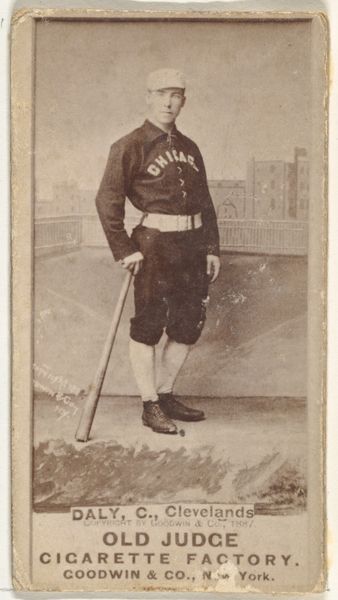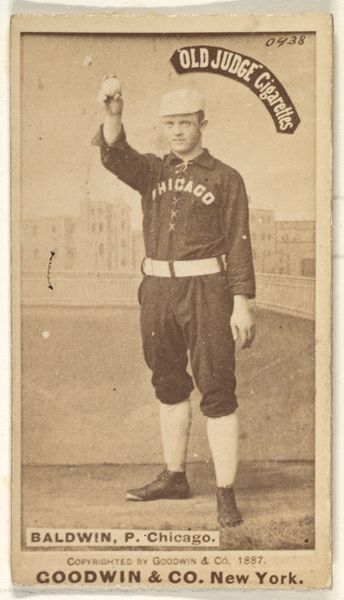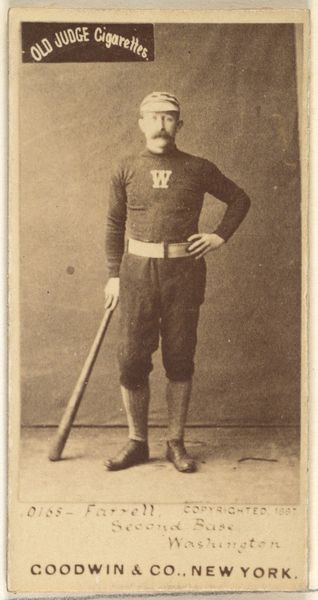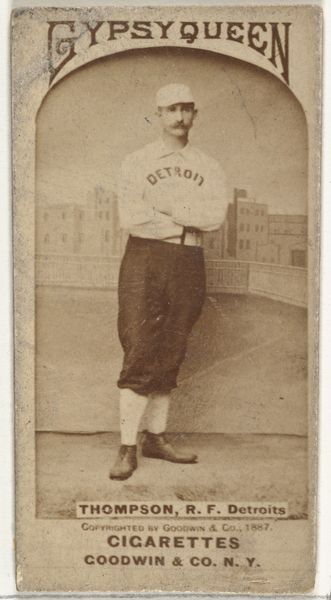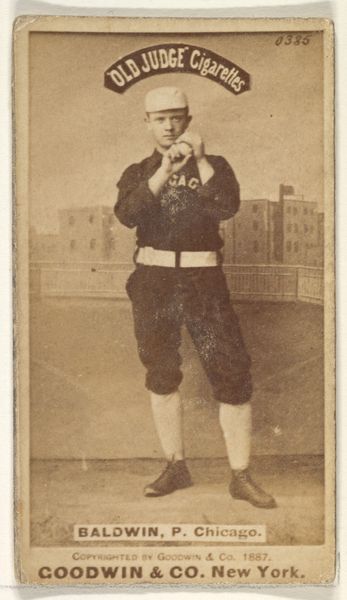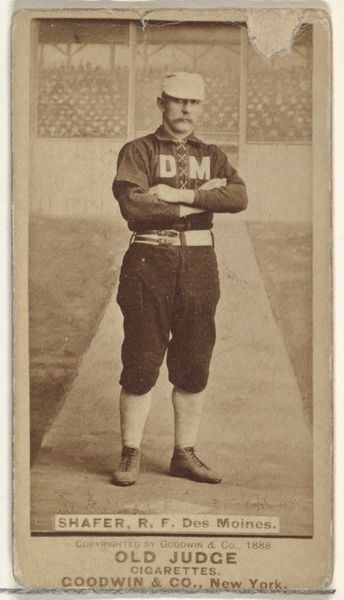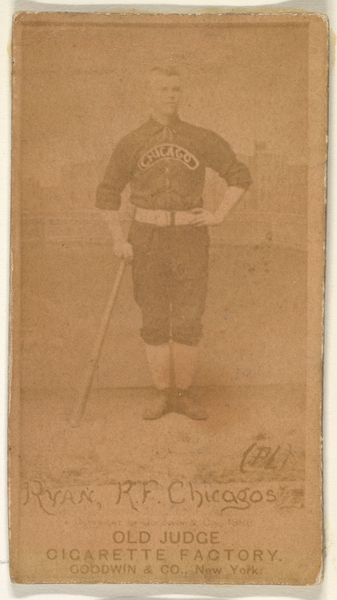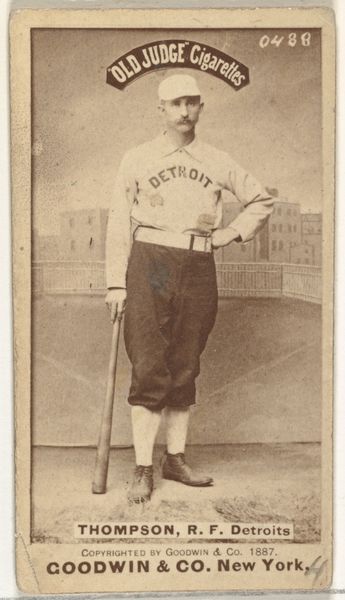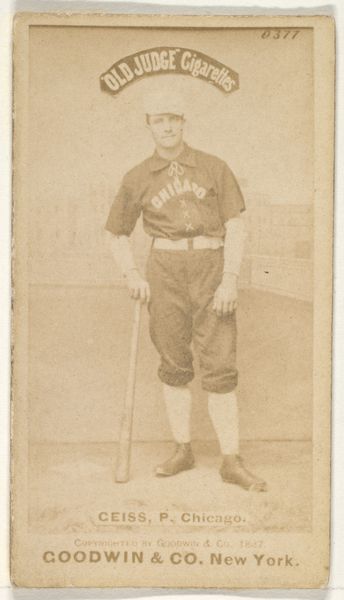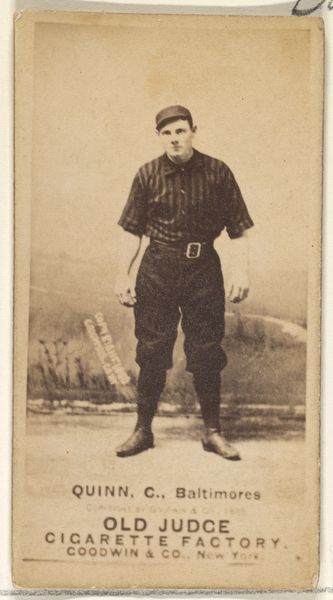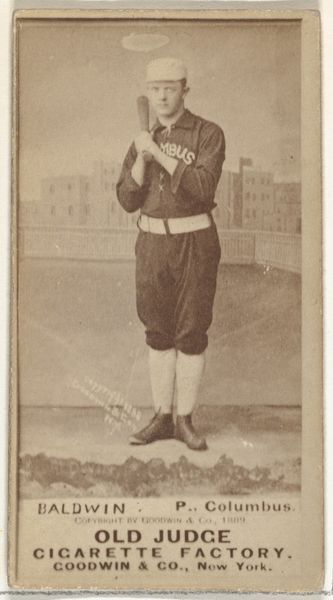
Baldwin, Pitcher, Chicago, from the Old Judge series (N172) for Old Judge Cigarettes 1887
0:00
0:00
drawing, print, photography
#
portrait
#
drawing
# print
#
baseball
#
photography
#
historical photography
#
men
#
genre-painting
Dimensions: sheet: 2 11/16 x 1 3/8 in. (6.9 x 3.5 cm)
Copyright: Public Domain
Curator: This is an 1887 image of baseball player Baldwin, a pitcher for the Chicago team. It comes from the "Old Judge" series of baseball cards produced by Goodwin & Company as promotional items for their cigarettes. Editor: It’s interesting how these images have this kind of soft-focus quality about them; almost ethereal. What strikes me most, though, is how the commercial use contrasts sharply with the kind of enduring, almost monumental feel of the player's pose. Curator: Indeed, placing these images within the context of 19th-century labor and consumer culture is important. Tobacco companies used them to cultivate customer loyalty and normalize smoking, which, from a feminist perspective, particularly targeted burgeoning notions of freedom for women in the public sphere. How interesting that a pitcher became synonymous with cigarette consumption! Editor: It also challenges the very idea of celebrity, doesn't it? Consider the production methods. It's mass-produced; made for rapid consumption—cheap. The original intention seems entirely at odds with the way we value such an artifact today. Think about the labour practices within Goodwin & Co., or of tobacco farming itself, that are ultimately being romanticized by these depictions of "Old Judge". Curator: Exactly. The racial dynamics are key here too. Though Baldwin is white, the promotional use of these images intersects with the racialized marketing strategies prevalent at the time, when imagery and the cultural consumption habits were shaping white masculinity. These cards, in this way, subtly participated in upholding social hierarchies and ideologies about race and class. Editor: You’ve brought a valuable point to light. It does come full circle back to materiality, right? What appears to be a simple baseball card actually implicates this network of labor, manufacturing, and racial and gendered ideas about consumption. Curator: Absolutely, unpacking the complex layers behind what might seem a straightforward piece allows us to delve into its historical resonance and lingering social narratives. Editor: It pushes one to rethink conventional notions of value and meaning production in art, where process and intention come into conversation with critical views.
Comments
No comments
Be the first to comment and join the conversation on the ultimate creative platform.
